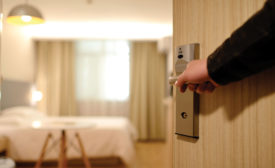Home » energy efficiency
Articles Tagged with ''energy efficiency''
Advanced Refrigeration Technologies Boosting Energy Efficiency in Supermarkets
Advances in HVACR technologies can produce significant savings
Read More
Homeowners Study Up to Shape the Energy Management Market
More research, increased environmentalism open new doors to connect with consumers
Read More
Hotel HVAC: Room to Improve
Facility Little Things Add Up! Help Hotels Manage Their Reservationsmanagers want seamless integration for smarter, more efficient operation
August 20, 2018
Regular HVAC Maintenance Prevents Costly Downtime in Mission Critical Facilities
HVAC contractors share best practices for keeping data centers in peak operating conditions
Read More
Reducing Energy, Operational Costs Key to Data Center Cooling
Data centers looking for cost-effective, creative solutions
Read More
Copyright ©2024. All Rights Reserved BNP Media.
Design, CMS, Hosting & Web Development :: ePublishing












